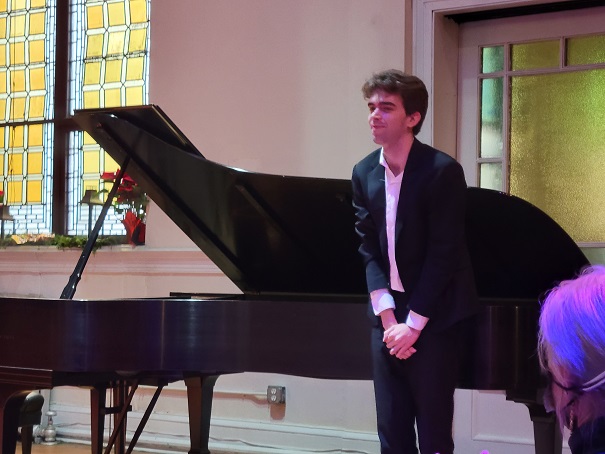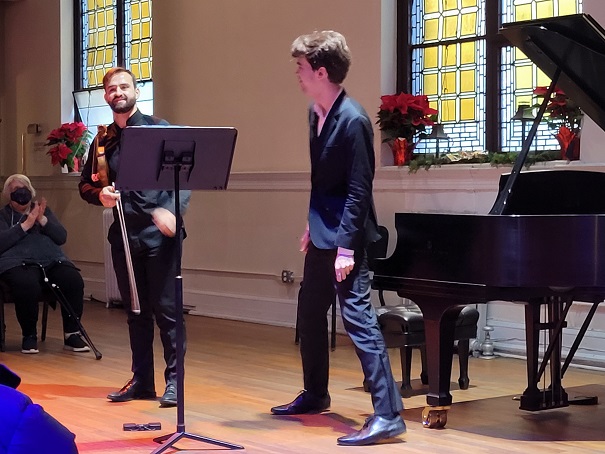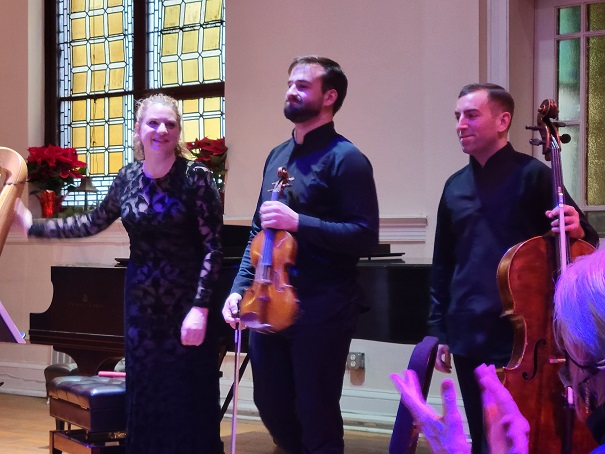Concert Diary: “French Romanticism” with the Jupiter Players
December 6, 2021
New York, N.Y.
Why does German music sound so German, and French music so French? Is it the relationship of music to spoken language? Or do we simply assume that “German music” is defined by common elements of Beethoven, Brahms, Wagner, et. al., while “French music” is defined by Berlioz, Debussy, Ravel, et. al? Or are composers influenced most by the music of of their compatriots, hence perpetuating a certain textures, melodies, and harmonies?
I’m not smart enough to answer these questions, but I was considering these issue during today’s program by the Jupiter Symphony Chamber Players entitled French Romanticism. What exactly made this music French?
The concert began with the original piano version of Maurice Ravel’s slow, stately, yet delicate Pavane pour une infante défunte, which becomes more hauntingly beautiful and poigmant when we know that the title means Pavane for a Dead Princess. Ravel was just 24 when he composed this in 1899 while studying under Gabriel Fauré. I suddenly remembered hearing a friend named Sam, a rather notable harp technician in New York City who died a few years ago, play this piece on his harp, perhaps in his own arrangement. It was not only the sadness for the dead princess I felt, but a sadness for Sam.
Here’s pianist Albert Cano Smit following the performance:
The next piece was an oddity. It’s an etude for piano (Op. 52 No. 6) by Camille Saint-Saëns arranged for violin and piano by the Belgian violinist and composer Eugène Ysaÿe, moving a lot of the ferocious virtuosic passages to the violin. At times it slowed down a bit to tentatively explore some melodies before drifting back into the crazies. Here’s violinist William Hagen with Albert Smit:
The next piece sounded very French to me. Perhaps because it was a Trio that used a harp, much like the Debussy Sonata for Flute, Viola, and Harp. I know that German composers sometimes use harps as well, but when Wagner needs a harp, he’ll ask for 7 of them.
This was a Trio in B♭ for violin, cello, and harp from 1801 by Henriette Renie (1875 – 1956), a composer I was unfamiliar with. She was also quite a prominent teacher of the harp: Among her students was Adolph Marx, better known as Harpo. (There exists a photo of them playing a harp duet.)
Henriette Renie wrote this Trio for herself, and it showcases the harp in many different roles and sonarities. Particularly in the first movement, Henriette Renie kept the harpist (Bridget Kibbey in this performance) quite busy. The second-movement Scherzo is tuneful with a highly contrasting Trio and an exceptionally satisfying return to the Scherzo. The lovely Andante begins with the cello and violin, using the harp as accompaniment. It builds to a climax but then pulls back into a ravishing coda. The Allegro finale takes a little time before becoming quite playful.
Here are the musicians following the performance:
The last work on the program was the real crowd-pleaser, and was apparently much more famous than it is now: A Piano Trio in G minor, Op. 15 by Sylvio Lazzari, who is considered a French composer, although ethnically Austrian and Italian. The online program notes indicate that this work “melds German Romanticism and French stylistic elements into his personal musical idiom,” so it completely scrambled up all my previous thoughts about French music. The first-movement Allegro combined dense Brahmsian textures with sweeping passionate melodies. The Andante began with rapturous cello and violin melodies with piano accompaniment, and then long notes on the strings with the piano exploring the themes.
The third-movement Allegro seemed like a Minuet movement to me, and I was initially turned off by the silly 3/4 tune that became very waltz-like. But it grew on me, and the musicians were having so much fun with fiery passages that then took up the waltz tune, that it won me over. The Finale was drenched in romantic passion, pathos, and triumph. Several different episodes were mixed in, including, just when I least expected it, a fugue.
A fugue? The fugue is definitely a German thing, so for understanding the distinguishing characteristics of French and German music, I remain in a state of confusion.


